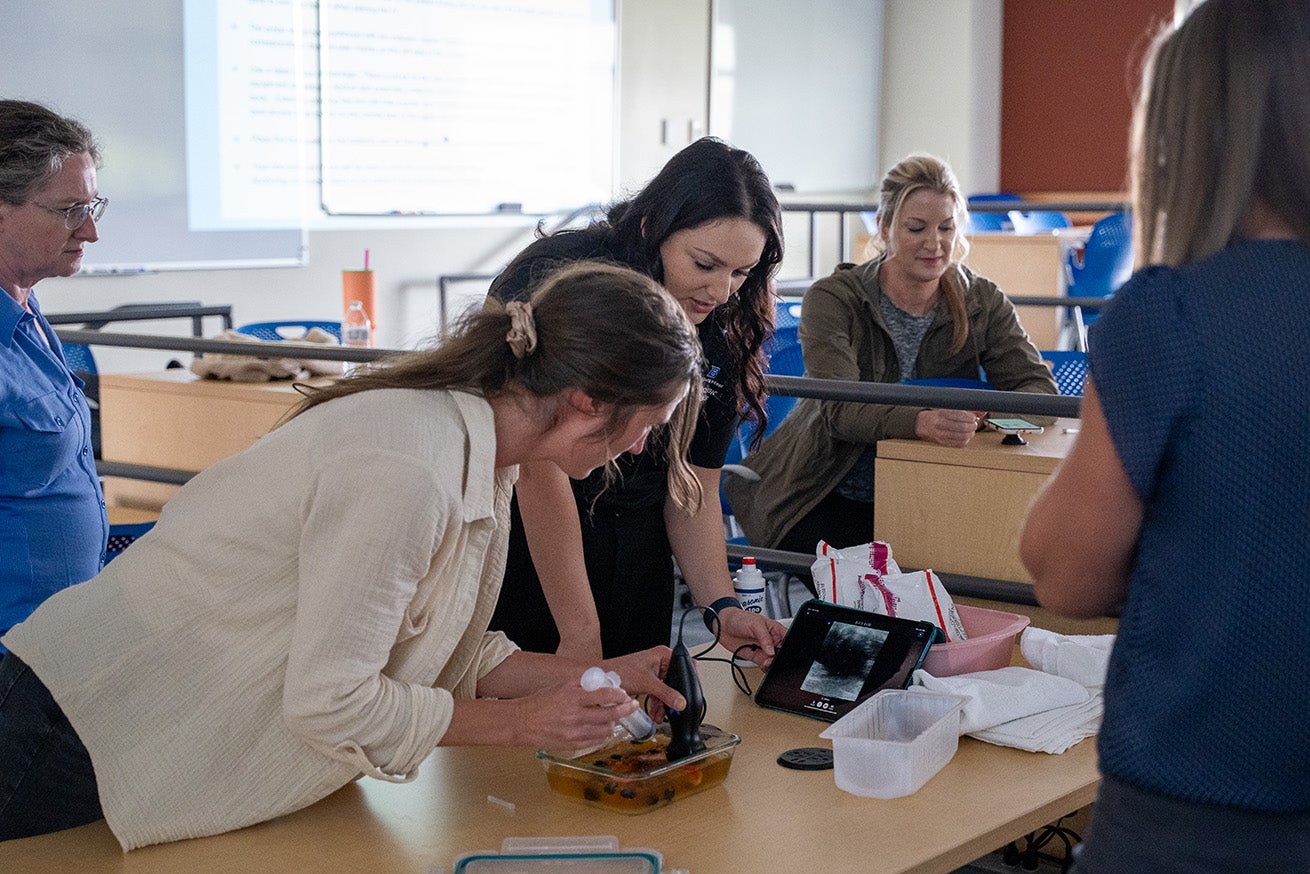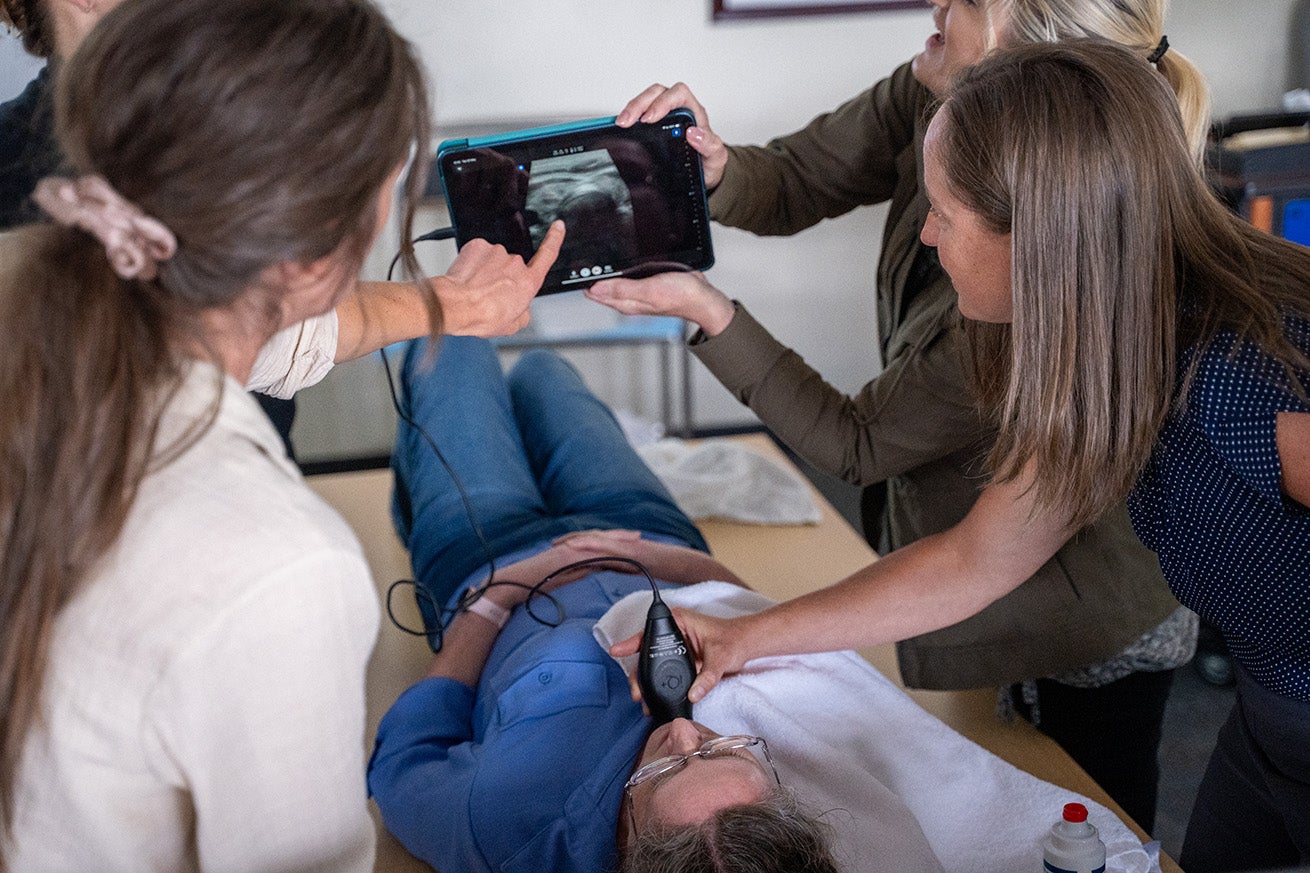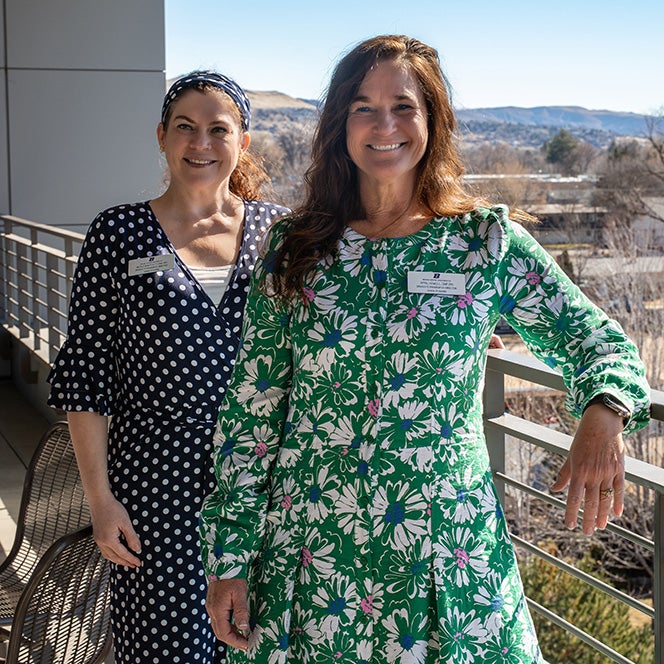Summer intensives are a cornerstone of the online graduate nursing program at Boise State. With in-person lectures, simulations and hands-on skills sessions, each year comes with its own unique opportunities for students. What sets this year apart?
This is the first summer intensive session for students in the Bachelor of Science to Doctor of Nursing Practice (BS-DNP) program, which prepares students with doctoral degrees as they study to become family nurse practitioners (FNP) or adult gerontology acute care nurse practitioners.

While some of the sessions apply to both tracks (such as suturing and conflict management), other lectures and activities differ based on specialty. For example, students in the acute care track learn about hemodynamics while FNP students study rheumatology.
This year also unveiled new technology and exciting opportunities for active learning.
New gadgets: VR headsets and ultrasounds
Virtual reality and Bodyswaps
The school received two virtual reality (VR) headsets and educational software through a grant from Bodyswaps, a company that designs immersive education using VR and artificial intelligence.
The company gets its name from the “body swap” element of its training modules: the learner interacts with a virtual human, then switches places with them and rewatches their conversation. According to the company, “this encourages an enhanced level of self-reflection and perspective-taking.”

Not just for healthcare settings, this educational technology focuses on building soft skills (like communication or de-escalation). The third-year nurse practitioner students completed a module on empathy as a precursor to a simulation.
The grant also provided full access to the Bodyswaps software. So even if a limited number of students get to wear a VR headset, larger groups can learn via their own computers or phones.
“Because it’s teaching soft skills, it really is designed for everyone to participate,” Chapman explained. This differs from simulation-style education where–whether or not everyone took part in the simulation–the majority of learning takes place during a group debrief.
Seeing with ultrasound

Boise State nurse practitioner students also spend summer intensives building skills that require specialized equipment or technology. Often the School of Nursing collaborates with other units across the university to borrow their equipment, like a cast saw or ultrasound machine. Given the increase in enrollment and the high demand for the skill, this year the school acquired its own portable, handheld ultrasound device.
“Its portability allows NP students to gain real-time, point-of-care ultrasound (POCUS) experience in various clinical settings—not just simulation labs—which reinforces classroom learning with practical, hands-on application,” said Nicole Loos-Bartlett, co-director of the BS-DNP program. “Seeing live anatomy and physiological function (e.g. cardiac motion, bladder fullness, lung sliding) helps students visualize and understand what they’ve learned in textbooks. It bridges the gap between theory and clinical practice.”
Simulations show students a new reality
While simulation education is tightly interwoven into the on-campus bachelor’s of nursing program, the graduate nursing program started utilizing it in 2024. Each of the three cohorts participate in at least one simulation during intensives. This year expanded their experience with a new scenario about giving bad news.
“We can’t guarantee that students will all have an experience of talking to a patient and their family about a devastating find,” said Tracee Chapman, the interim director of simulation-based education and research at the School of Nursing.

Because each student’s individual clinical placement experience is unique, Chapman looks for ways to fill potential gaps in learning through simulation practice. She collaborated with associate professor Molly Prengaman and clinical assistant professor Tammie Sherner to develop a scenario where students inform a patient about a suspicious mass found through imaging tests.
“That’s a really hard thing to say, to tell a patient that their life is going to be totally changed and probably not for the better,” Chapman said. “We want students to be able to practice that in a safe environment and be able to work through some language that will help them in the future.”

The simulation piggy-backs on the Bodyswaps training, in which students practiced talking with a patient who has dementia and is going to be removed from their home.
“This scenario is all about the patient experience, so I wanted them to have a little space to practice and remind them what empathy looks like and how it comes across to patients if we’re not empathetic,” Chapman said. “Trying to keep in mind our school’s culture of active learning and keeping students engaged in different ways, I think that was the key.”
According to April Howell, the other BS-DNP program co-director, students shared very positive feedback about the simulations and the ultrasound experience.